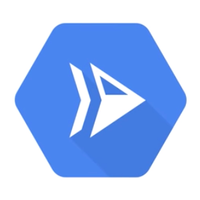What is AWS Fargate and what are its top alternatives?
Top Alternatives to AWS Fargate
 Google App Engine
Google App EngineGoogle has a reputation for highly reliable, high performance infrastructure. With App Engine you can take advantage of the 10 years of knowledge Google has in running massively scalable, performance driven systems. App Engine applications are easy to build, easy to maintain, and easy to scale as your traffic and data storage needs grow. ...
 Kubernetes
KubernetesKubernetes is an open source orchestration system for Docker containers. It handles scheduling onto nodes in a compute cluster and actively manages workloads to ensure that their state matches the users declared intentions. ...
 AWS Batch
AWS BatchIt enables developers, scientists, and engineers to easily and efficiently run hundreds of thousands of batch computing jobs on AWS. It dynamically provisions the optimal quantity and type of compute resources (e.g., CPU or memory optimized instances) based on the volume and specific resource requirements of the batch jobs submitted. ...
 AWS Lambda
AWS LambdaAWS Lambda is a compute service that runs your code in response to events and automatically manages the underlying compute resources for you. You can use AWS Lambda to extend other AWS services with custom logic, or create your own back-end services that operate at AWS scale, performance, and security. ...
 Batch
BatchYes, we’re really free. So, how do we keep the lights on? Instead of charging you a monthly fee, we sell ads on your behalf to the top 500 mobile advertisers in the world. With Batch, you earn money each month while accessing great engagement tools for free. ...
 Google Cloud Run
Google Cloud RunA managed compute platform that enables you to run stateless containers that are invocable via HTTP requests. It's serverless by abstracting away all infrastructure management. ...
 Beanstalk
BeanstalkA single process to commit code, review with the team, and deploy the final result to your customers. ...
 Docker
DockerThe Docker Platform is the industry-leading container platform for continuous, high-velocity innovation, enabling organizations to seamlessly build and share any application — from legacy to what comes next — and securely run them anywhere ...
AWS Fargate alternatives & related posts
Google App Engine
- Easy to deploy145
- Auto scaling106
- Good free plan80
- Easy management62
- Scalability56
- Low cost35
- Comprehensive set of features32
- All services in one place28
- Simple scaling22
- Quick and reliable cloud servers19
- Granular Billing6
- Easy to develop and unit test5
- Monitoring gives comprehensive set of key indicators5
- Really easy to quickly bring up a full stack3
- Create APIs quickly with cloud endpoints3
- No Ops2
- Mostly up2
related Google App Engine posts
So, the shift from Amazon EC2 to Google App Engine and generally #AWS to #GCP was a long decision and in the end, it's one that we've taken with eyes open and that we reserve the right to modify at any time. And to be clear, we continue to do a lot of stuff with AWS. But, by default, the content of the decision was, for our consumer-facing products, we're going to use GCP first. And if there's some reason why we don't think that's going to work out great, then we'll happily use AWS. In practice, that hasn't really happened. We've been able to meet almost 100% of our needs in GCP.
So it's basically mostly Google Kubernetes Engine , we're mostly running stuff on Kubernetes right now.
#AWStoGCPmigration #cloudmigration #migration
 React
React Create React App
Create React App CloudFlare
CloudFlare Firebase
Firebase Cloud Functions for Firebase+5 more
Cloud Functions for Firebase+5 moreIn #Aliadoc, we're exploring the crowdfunding option to get traction before launch. We are building a SaaS platform for website design customization.
For the Admin UI and website editor we use React and we're currently transitioning from a Create React App setup to a custom one because our needs have become more specific. We use CloudFlare as much as possible, it's a great service.
For routing dynamic resources and proxy tasks to feed websites to the editor we leverage CloudFlare Workers for improved responsiveness. We use Firebase for our hosting needs and user authentication while also using several Cloud Functions for Firebase to interact with other services along with Google App Engine and Google Cloud Storage, but also the Real Time Database is on the radar for collaborative website editing.
We generally hate configuration but honestly because of the stage of our project we lack resources for doing heavy sysops work. So we are basically just relying on Serverless technologies as much as we can to do all server side processing.
Visual Studio Code definitively makes programming a much easier and enjoyable task, we just love it. We combine it with Bitbucket for our source code control needs.
Kubernetes
- Leading docker container management solution166
- Simple and powerful130
- Open source108
- Backed by google76
- The right abstractions58
- Scale services26
- Replication controller20
- Permission managment11
- Supports autoscaling9
- Cheap8
- Simple8
- Self-healing7
- Open, powerful, stable5
- Promotes modern/good infrascture practice5
- Reliable5
- No cloud platform lock-in5
- Scalable4
- Quick cloud setup4
- Cloud Agnostic3
- Custom and extensibility3
- A self healing environment with rich metadata3
- Captain of Container Ship3
- Backed by Red Hat3
- Runs on azure3
- Expandable2
- Sfg2
- Everything of CaaS2
- Gke2
- Golang2
- Easy setup2
- Steep learning curve16
- Poor workflow for development15
- Orchestrates only infrastructure8
- High resource requirements for on-prem clusters4
- Too heavy for simple systems2
- Additional vendor lock-in (Docker)1
- More moving parts to secure1
- Additional Technology Overhead1
related Kubernetes posts
How Uber developed the open source, end-to-end distributed tracing Jaeger , now a CNCF project:
Distributed tracing is quickly becoming a must-have component in the tools that organizations use to monitor their complex, microservice-based architectures. At Uber, our open source distributed tracing system Jaeger saw large-scale internal adoption throughout 2016, integrated into hundreds of microservices and now recording thousands of traces every second.
Here is the story of how we got here, from investigating off-the-shelf solutions like Zipkin, to why we switched from pull to push architecture, and how distributed tracing will continue to evolve:
https://eng.uber.com/distributed-tracing/
(GitHub Pages : https://www.jaegertracing.io/, GitHub: https://github.com/jaegertracing/jaeger)
Bindings/Operator: Python Java Node.js Go C++ Kubernetes JavaScript OpenShift C# Apache Spark
Our first experience with .NET core was when we developed our OSS feature management platform - Tweek (https://github.com/soluto/tweek). We wanted to create a solution that is able to run anywhere (super important for OSS), has excellent performance characteristics and can fit in a multi-container architecture. We decided to implement our rule engine processor in F# , our main service was implemented in C# and other components were built using JavaScript / TypeScript and Go.
Visual Studio Code worked really well for us as well, it worked well with all our polyglot services and the .Net core integration had great cross-platform developer experience (to be fair, F# was a bit trickier) - actually, each of our team members used a different OS (Ubuntu, macos, windows). Our production deployment ran for a time on Docker Swarm until we've decided to adopt Kubernetes with almost seamless migration process.
After our positive experience of running .Net core workloads in containers and developing Tweek's .Net services on non-windows machines, C# had gained back some of its popularity (originally lost to Node.js), and other teams have been using it for developing microservices, k8s sidecars (like https://github.com/Soluto/airbag), cli tools, serverless functions and other projects...
- Containerized3
- Scalable3
- More overhead than lambda3
- Image management1
related AWS Batch posts
AWS Lambda
- No infrastructure129
- Cheap83
- Quick70
- Stateless59
- No deploy, no server, great sleep47
- AWS Lambda went down taking many sites with it12
- Event Driven Governance6
- Extensive API6
- Auto scale and cost effective6
- Easy to deploy6
- VPC Support5
- Integrated with various AWS services3
- Cant execute ruby or go7
- Compute time limited3
- Can't execute PHP w/o significant effort1
related AWS Lambda posts
Recently we were looking at a few robust and cost-effective ways of replicating the data that resides in our production MongoDB to a PostgreSQL database for data warehousing and business intelligence.
We set ourselves the following criteria for the optimal tool that would do this job: - The data replication must be near real-time, yet it should NOT impact the production database - The data replication must be horizontally scalable (based on the load), asynchronous & crash-resilient
Based on the above criteria, we selected the following tools to perform the end to end data replication:
We chose MongoDB Stitch for picking up the changes in the source database. It is the serverless platform from MongoDB. One of the services offered by MongoDB Stitch is Stitch Triggers. Using stitch triggers, you can execute a serverless function (in Node.js) in real time in response to changes in the database. When there are a lot of database changes, Stitch automatically "feeds forward" these changes through an asynchronous queue.
We chose Amazon SQS as the pipe / message backbone for communicating the changes from MongoDB to our own replication service. Interestingly enough, MongoDB stitch offers integration with AWS services.
In the Node.js function, we wrote minimal functionality to communicate the database changes (insert / update / delete / replace) to Amazon SQS.
Next we wrote a minimal micro-service in Python to listen to the message events on SQS, pickup the data payload & mirror the DB changes on to the target Data warehouse. We implemented source data to target data translation by modelling target table structures through SQLAlchemy . We deployed this micro-service as AWS Lambda with Zappa. With Zappa, deploying your services as event-driven & horizontally scalable Lambda service is dumb-easy.
In the end, we got to implement a highly scalable near realtime Change Data Replication service that "works" and deployed to production in a matter of few days!
Heroku Docker GitHub Node.js hapi Vue.js AWS Lambda Amazon S3 PostgreSQL Knex.js Checkly is a fairly young company and we're still working hard to find the correct mix of product features, price and audience.
We are focussed on tech B2B, but I always wanted to serve solo developers too. So I decided to make a $7 plan.
Why $7? Simply put, it seems to be a sweet spot for tech companies: Heroku, Docker, Github, Appoptics (Librato) all offer $7 plans. They must have done a ton of research into this, so why not piggy back that and try it out.
Enough biz talk, onto tech. The challenges were:
- Slice of a portion of the functionality so a $7 plan is still profitable. We call this the "plan limits"
- Update API and back end services to handle and enforce plan limits.
- Update the UI to kindly state plan limits are in effect on some part of the UI.
- Update the pricing page to reflect all changes.
- Keep the actual processing backend, storage and API's as untouched as possible.
In essence, we went from strictly volume based pricing to value based pricing. Here come the technical steps & decisions we made to get there.
- We updated our PostgreSQL schema so plans now have an array of "features". These are string constants that represent feature toggles.
- The Vue.js frontend reads these from the vuex store on login.
- Based on these values, the UI has simple
v-ifstatements to either just show the feature or show a friendly "please upgrade" button. - The hapi API has a hook on each relevant API endpoint that checks whether a user's plan has the feature enabled, or not.
Side note: We offer 10 SMS messages per month on the developer plan. However, we were not actually counting how many people were sending. We had to update our alerting daemon (that runs on Heroku and triggers SMS messages via AWS SNS) to actually bump a counter.
What we build is basically feature-toggling based on plan features. It is very extensible for future additions. Our scheduling and storage backend that actually runs users' monitoring requests (AWS Lambda) and stores the results (S3 and Postgres) has no knowledge of all of this and remained unchanged.
Hope this helps anyone building out their SaaS and is in a similar situation.
Batch
- Revenuecat2
related Batch posts
Google Cloud Run
- HTTPS endpoints11
- Fully managed10
- Pay per use10
- Concurrency: multiple requests sent to each container7
- Deploy containers7
- Serverless7
- Custom domains with auto SSL6
- "Invoke IAM permission" to manage authentication4
- Cons0
related Google Cloud Run posts
 Google Cloud IoT Core
Google Cloud IoT Core Terraform
Terraform Python
Python Google Cloud Deployment Manager
Google Cloud Deployment Manager Google Cloud Build+6 more
Google Cloud Build+6 moreContext: I wanted to create an end to end IoT data pipeline simulation in Google Cloud IoT Core and other GCP services. I never touched Terraform meaningfully until working on this project, and it's one of the best explorations in my development career. The documentation and syntax is incredibly human-readable and friendly. I'm used to building infrastructure through the google apis via Python , but I'm so glad past Sung did not make that decision. I was tempted to use Google Cloud Deployment Manager, but the templates were a bit convoluted by first impression. I'm glad past Sung did not make this decision either.
Solution: Leveraging Google Cloud Build Google Cloud Run Google Cloud Bigtable Google BigQuery Google Cloud Storage Google Compute Engine along with some other fun tools, I can deploy over 40 GCP resources using Terraform!
Check Out My Architecture: CLICK ME
Check out the GitHub repo attached
- Ftp deploy14
- Deployment9
- Easy to navigate8
- Code Editing4
- HipChat Integration4
- Integrations4
- Code review3
- HTML Preview2
- Security1
- Blame Tool1
- Cohesion1
related Beanstalk posts
- Rapid integration and build up823
- Isolation692
- Open source521
- Testability and reproducibility505
- Lightweight460
- Standardization218
- Scalable185
- Upgrading / downgrading / application versions106
- Security88
- Private paas environments85
- Portability34
- Limit resource usage26
- Game changer17
- I love the way docker has changed virtualization16
- Fast14
- Concurrency12
- Docker's Compose tools8
- Easy setup6
- Fast and Portable6
- Because its fun5
- Makes shipping to production very simple4
- Highly useful3
- It's dope3
- Package the environment with the application2
- Super2
- Open source and highly configurable2
- Simplicity, isolation, resource effective2
- MacOS support FAKE2
- Its cool2
- Does a nice job hogging memory2
- Docker hub for the FTW2
- HIgh Throughput2
- Very easy to setup integrate and build2
- Asdfd0
- New versions == broken features8
- Unreliable networking6
- Documentation not always in sync6
- Moves quickly4
- Not Secure3
related Docker posts
Our whole DevOps stack consists of the following tools:
- GitHub (incl. GitHub Pages/Markdown for Documentation, GettingStarted and HowTo's) for collaborative review and code management tool
- Respectively Git as revision control system
- SourceTree as Git GUI
- Visual Studio Code as IDE
- CircleCI for continuous integration (automatize development process)
- Prettier / TSLint / ESLint as code linter
- SonarQube as quality gate
- Docker as container management (incl. Docker Compose for multi-container application management)
- VirtualBox for operating system simulation tests
- Kubernetes as cluster management for docker containers
- Heroku for deploying in test environments
- nginx as web server (preferably used as facade server in production environment)
- SSLMate (using OpenSSL) for certificate management
- Amazon EC2 (incl. Amazon S3) for deploying in stage (production-like) and production environments
- PostgreSQL as preferred database system
- Redis as preferred in-memory database/store (great for caching)
The main reason we have chosen Kubernetes over Docker Swarm is related to the following artifacts:
- Key features: Easy and flexible installation, Clear dashboard, Great scaling operations, Monitoring is an integral part, Great load balancing concepts, Monitors the condition and ensures compensation in the event of failure.
- Applications: An application can be deployed using a combination of pods, deployments, and services (or micro-services).
- Functionality: Kubernetes as a complex installation and setup process, but it not as limited as Docker Swarm.
- Monitoring: It supports multiple versions of logging and monitoring when the services are deployed within the cluster (Elasticsearch/Kibana (ELK), Heapster/Grafana, Sysdig cloud integration).
- Scalability: All-in-one framework for distributed systems.
- Other Benefits: Kubernetes is backed by the Cloud Native Computing Foundation (CNCF), huge community among container orchestration tools, it is an open source and modular tool that works with any OS.
I have got a small radio service running on Node.js. Front end is written with React and packed with Webpack . I use Docker for my #DeploymentWorkflow along with Docker Swarm and GitLab CI on a single Google Compute Engine instance, which is also a runner itself. Pretty unscalable decision but it works great for tiny projects. The project is available on https://fridgefm.com






























